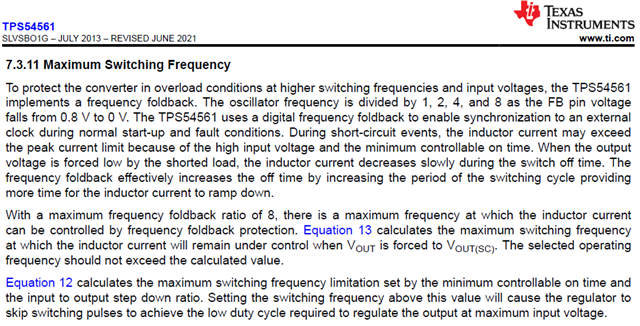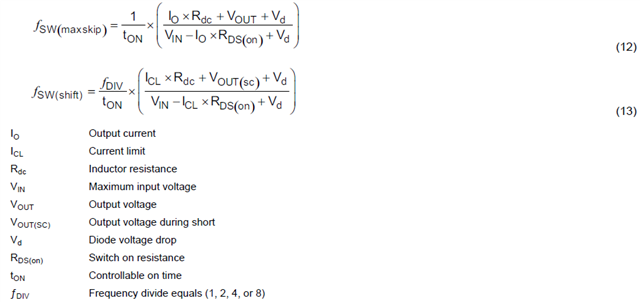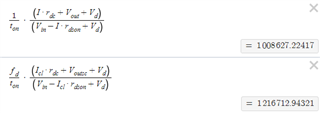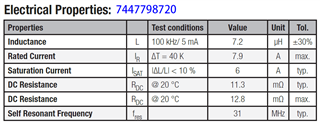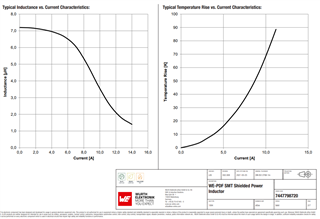HI TI
The switching frequency of the TPS54561 is adjustable over a wide range from 100 kHz to 2500 kHz by placing a resistor between the RT/CLK pin and GND pin.
However, according to the application example in the datasheet (8.2.1 Buck Converter for 7-V to 60-V Input to 5-V at 5-A Output), the switching frequency cannot be higher than 708 kHz and 855 kHz which are calculated from equations 12 and 13, so the switching frequency 400 kHz was chosen for this application example.
My question is, taking TPS54561 device as an example, the maximum switching frequency of 2500 kHz can only be supported in specific operating conditions, not in all operating conditions?


